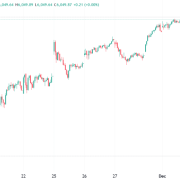
As the Covid-19 pandemic continues to evolve, a new variant known as the Covid XEC variant is starting to spread rapidly across Europe, North America, and parts of Asia.
First identified in Germany in June, this sublineage of the Omicron variant is raising concerns among scientists and health officials due to its increased transmissibility.
Experts predict that the XEC variant could become the dominant strain in the coming months, potentially sparking a new wave of infections.
With many countries reporting growing cases, including the UK, US, and Denmark, understanding this emerging variant and its impact is critical.
The Covid XEC variant is a hybrid strain, derived from two previously identified Omicron subvariants—KS.1.1 and KP.3.3.
These mutations affect the virus’s spike protein, enhancing its ability to bind to human cells, which may explain its rapid spread.
Scientists, including renowned researchers such as Eric Topol, Director of the Scripps Research Translational Institute, have warned that XEC could soon “take charge” and become a dominant variant.
At this juncture, the XEC variant appears to be the most likely one to get legs next. Its current status nicely tracked by @Mike_Honey_ ‘s thread
x.com/Mike_Honey_/st…
Recombinant variant XEC is continuing to spread, and looks a likely next challenger against the now-dominant DeFLuQE variants (KP.3.1.1.*).
Here are the leading countries reporting XEC. Strong growth in Denmark and Germany (16-17%), also the UK and Netherlands (11-13%).
🧵
Despite its growth, health experts are optimistic that vaccines, including booster shots, will continue to provide robust protection against severe illness caused by the new variant.
The rise of the Covid XEC variant
The spread of the Covid XEC variant has been most noticeable in Europe, where countries like Germany, Denmark, and Slovenia are seeing a significant rise in infections.
In Slovenia, more than 10% of Covid samples tested in August contained the XEC strain, a worrying sign that this variant may become more widespread.
According to Covid data analyst Mike Honey, the variant is growing steadily in several countries, including the UK and the Netherlands.
The new variant has now been detected in 27 countries, including Poland, Norway, Luxembourg, Ukraine, Portugal, and China.
The XEC variant’s enhanced transmissibility has raised concerns about its potential to cause further disruptions this fall and winter, especially as flu season approaches.
How does the XEC variant compare to other strains?
The XEC variant belongs to a category of mutations known as FLiRT and FLuQE, which refer to specific changes in the amino acids on the spike protein that the virus uses to infect human cells.
These changes make the virus more effective at binding to its host, thereby increasing its transmissibility.
Although this makes the XEC variant more contagious, it is still a sublineage of the Omicron variant, meaning its symptoms are largely similar to other Covid strains.
People infected with the Covid XEC variant report typical cold or flu-like symptoms, such as fever, cough, sore throat, and body aches.
Loss of smell and appetite, which were common in earlier Covid variants, are also observed in some cases.
While most people recover within a few weeks, those with weakened immune systems or underlying health conditions may take longer to fully heal.
Vaccines still offer protection
Despite the potential threat posed by the XEC variant, experts emphasize that vaccines remain the most effective defense against severe illness.
While the current vaccines were not specifically designed for the XEC variant, they still offer strong protection against serious symptoms and hospitalization.
The UK’s National Health Service (NHS) has updated its Covid booster shots to better match recent variants, and health officials urge those at high risk, such as older adults and people with underlying health conditions, to get vaccinated.
Health authorities, including the UK Health Security Agency (UKHSA), are closely monitoring the spread of the Covid XEC variant.
What’s next for the XEC variant?
As the Covid XEC variant continues to spread, experts believe it could take several weeks or even months before it becomes the dominant strain globally.
Director of the Scripps Research Translational Institute, Eric Topol, has warned that the variant is “just getting started” and will likely cause a wave of infections shortly. However, the timing of this potential surge is still uncertain.
In the meantime, health authorities will continue to monitor the situation, and it remains crucial for people to stay up to date with vaccinations to mitigate the impact of the new variant.
For now, while the XEC variant presents a new challenge, the global community is better equipped with vaccines and preventive measures to manage the next phase of the Covid-19 pandemic.
The post New Covid XEC variant spreads across Europe and beyond: what you need to know appeared first on Invezz









